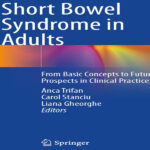- عنوان کتاب: CSA Z662-23 – Oil and gas pipeline systems
- نویسنده: CSA Group
- حوزه: خطوط لوله
- سال انتشار: 2024
- تعداد صفحه: 1003
- زبان اصلی: انگلیسی
- نوع فایل: pdf
- حجم فایل: 7.50 مگابایت
این نهمین نسخه CSA Z662، سیستم های خط لوله نفت و گاز است. این نسخه جایگزین نسخههای قبلی منتشر شده در سالهای 2019، 2015، 2011، 2007، 2003، 1999، 1996، و 1994 میشود. تغییرات مهم در این نسخه به شرح زیر است: الف) بند 3 و پیوست A برای ارائه چارچوبی مشترک بازنگری شدهاند. ممیزی ها؛ ب) بندهای 4 و 7 برای رسیدگی به نگرانیهای مربوط به عدم تطابق استحکام جوش دور ناخالص و نرم شدن ناحیه متاثر از حرارت، هنگام جوشکاری لوله خط با استحکام بالا برای یک خط لوله طراحی مبتنی بر تنش، تجدید نظر شدهاند. ج) بند 17 در مورد خطوط لوله فولادی کامپوزیت تقویت شده حذف شده است. یک بند جدید 17، در مورد سیستم های خط لوله هیدروژن و هیدروژن، اضافه شده است. د) برای هیدروژن و گازهای تجدیدپذیر: i) محدوده به 1) تأیید می شود که ترکیبات هیدروژن و هیدروژن در استاندارد گنجانده شده است. 2) تأیید کنید که گاز تجدیدپذیر معادل گاز تولید شده در چاه است. و 3) روشن شود که سایر منابع و فرآیندهای گاز، نه فقط چاهها، میتوانند هیدروژن و گاز تجدیدپذیر تولید کنند. ii) یک بند جدید 17 برای ادغام رسمی الزامات هیدروژن در این استاندارد اضافه شده است. و iii) تغییراتی در سراسر این استاندارد برای کمک به رسیدگی به الزامات طراحی منحصر به فرد، مواد، ساخت و ساز و عملیاتی خطوط لوله حاوی هیدروژن ایجاد شده است. ه) برای کلاس ایمنی: i) تغییراتی در بندهای 4 و 10 ایجاد شده است تا طراحی فشار مطابق با پیوست C مجاز باشد. ii) ضمیمه C برای گنجاندن رویکرد تعیین کلاس ایمنی برای انتخاب مایعات خدماتی تجدید نظر شده است. در جایی که ضمیمه C برای طراحی فشار استفاده می شود، به جای مکان کلاس، از کلاس ایمنی به عنوان مبنایی برای تعیین حداکثر تنش حلقه مجاز استفاده می شود. iii) ضمیمه C برای گنجاندن جدولی بازنگری شده است که کلاس ایمنی تعیین شده بر اساس ضمیمه را بر روی یک مکان کلاس ترسیم می کند. مکان کلاس به دست آمده از این جدول به عنوان مبنایی برای شناسایی الزامات قابل اجرا در سایر بندهای وابسته به مکان کلاس این استاندارد استفاده می شود. و) بند 7.7.4.3 و جدول 7.4 تجدید نظر شده اند تا استفاده از NDE حجمی برای جایگزینی برش های شکاف برای صلاحیت روش جوشکاری و صلاحیت جوشکار و گسترش محدودیت های مجاز تخلخل در شکاف های شکافی مورد بازبینی قرار گیرد. ز) محتوای جدیدی به بند 10 اضافه شده است که وضوح بیشتری را برای فعالیت های حق تقدم لازم برای رسیدگی مداوم به خطرات احتمالی برای سیستم خط لوله فراهم می کند. ح) بند 12.5.7 با بند 5.7.1 با توجه به الزامات تجویزی تر برای نگهداری سوابق که شامل حفظ گزارش های آزمایش مواد برای تمام لوله ها و اجزای فولادی باشد، همراستا شده است. i) محتوای اضافی به بند 12 برای رسیدگی به کاهش متقاطع حفره اضافه شده است. ی) پیوست B برای گنجاندن الزامات دقیق تر برای انجام ارزیابی ریسک و معیارهای پذیرش کمی برای خطرات ایمنی و زیست محیطی تجدید نظر شده است. ک) پیوست N برای همسویی با تجدید نظرهای پیوست B تجدید نظر شده است. ل) در مورد الزامات فشار طراحی و ضخامت دیواره طراحی خمهای سرد صحرایی ساخته شده از لوله فولادی، که در آن محور طولی بیش از 1.5 درجه در هیچ طولی در امتداد محور برابر با قطر خارجی انحراف نداشته باشد، تجدید نظر شده است. لوله m) یک الزام جدید برای به دست آوردن و حفظ گزارش های آزمایش مواد برای لوله و اجزاء معرفی شده است. n) الزامات برای اتصالات کمکی رزوه ای یا جوشی روی فلنج های کور با اندازه های مختلف گسترش یافته است. o) محدودیت های اضافی بر روی فلنج های ASTM A105/A105M اعمال شده است. ص) الزامات جدیدی برای خمهای القایی و سرد با ارجاع به مشخصات در CSA Z245.16 و Z245.17 معرفی شده است. q) الزامات جدید صلاحیت مجدد برای لوله های پوشش داده شده در انبارهای طولانی معرفی شده است. ر) الزامات جدیدی برای عملیات هیدروواک یا هوا-واک معرفی شده است. ث) الزامات برای مایعات حاوی H2S به روز شده است. t) الزامات فشار چرخه ای در خطوط لوله کامپوزیت تقویت شده و الزامات جدید برای میراگرهای ضربانی به روز شده است. u) الزامات جدیدی برای استفاده از لوله کامپوزیت تقویت شده در خدمات انتقال گاز معرفی شده است. v) الزامات جدیدی برای قطعات انتقال خاصی که طبق CSA B51 ثبت می شوند، اضافه شده است. w) الزامات برای تعمیر عیوب لوله پلی اتیلن قبل و در حین نصب به روز شده است. x) الزامات برای مواد برای خطوط لوله خدمات با دمای بالا به روز شده است. y) الزامات جدیدی برای پرداختن به اثر هیدروکربن های مایع در دیواره لوله بر اتصال همجوشی حرارتی لوله پلی اتیلن (در غیر از خدمات توزیع گاز) معرفی شده است. z) الزامات برای آزمایش فشار لوله پلی اتیلن (در غیر از خدمات توزیع گاز) تجدید نظر شده است. الف) الزامات برای رایزرهای آلیاژی مقاوم در برابر خوردگی و لولههای متصل به هم برای خطوط لوله خطدار و خطوط لوله پلی اتیلن گنجانده شده است. الب) الزامات برای خطوط لوله خدمات ترش به روز شده است تا اطمینان حاصل شود که بند 16 با نسخه بعدی MR0175/ISO15156 مطابقت دارد.
This is the ninth edition of CSA Z662, Oil and gas pipeline systems. It supersedes the previous editions published in 2019, 2015, 2011, 2007, 2003, 1999, 1996, and 1994. The following are the significant changes to this edition: a) Clause 3 and Annex A have been revised to provide a common framework for audits; b) Clauses 4 and 7 have been revised to address concerns with gross girth weld strength undermatching and heat affected zone softening, when welding high strength line pipe for a stress-based design pipeline; c) Clause 17, on composite reinforced steel pipelines, has been deleted. A new Clause 17, on hydrogen and hydrogen blend pipeline systems, has been added. d) For hydrogen and renewable gas: i) the scope has been updated to 1) confirm hydrogen and hydrogen blends are included in the standard; 2) confirm that renewable gas is equivalent to wellsite produced gas; and 3) clarify that other gas sources and processes, not just wellsites, can produce hydrogen and renewable gas; ii) a new Clause 17 had been added to formally integrate hydrogen requirements into this Standard; and iii) changes have been made throughout this Standard to aid with handling unique design, material, construction, and operational requirements for pipelines containing hydrogen. e) For safety class: i) changes have been made in Clauses 4 and 10 to permit pressure design in accordance with Annex C; ii) Annex C has been revised to include a safety class designation approach for a selection of service fluids. Where Annex C is used for pressure design, safety class is used instead of class location, as a basis for defining the maximum allowable hoop stress; iii) Annex C has been revised to include a table that maps the safety class determined according to the Annex onto a class location. The class location derived from this table is used as a basis for identifying the applicable requirements in all other class-location-dependent clauses of this Standard. f) Clause 7.7.4.3 and Table 7.4 have been revised to allow the use of volumetric NDE to replace nick breaks for welding procedure qualification and welder qualification and expand the allowable limits of porosity in nick breaks; g) New content has been added to Clause 10 provide more clarity for the necessary right-of-way activities to continuously address potential hazards to the pipeline system. h) Clause 12.5.7 has been aligned to Clause 5.7.1 in regard to a more prescriptive requirement for records retention to include retention of material test reports for all steel pipe and components. i) Additional content has been added to Clause 12 to address cross bore mitigation. j) Annex B has been revised to include more detailed requirements for performing a risk assessment and quantitative acceptance criteria for safety and environmental risks. k) Annex N has been revised to align with the Annex B revisions. l) Revisions have been made to the requirements for the design pressure and design wall thickness of field cold bends made from steel pipe, where the longitudinal axis is not deflected more than 1.5° in any length along the axis equal to the outside diameter of the pipe. m) A new requirement has been introduced to obtain and retain material test reports for pipe and components. n) Requirements have been expanded for threaded or welded auxiliary connections on blind flanges of various sizes. o) Additional limitations have been imposed on ASTM A105/A105M flanges. p) New requirements have been introduced for induction and cold bends through reference to specifications in CSA Z245.16 and Z245.17. q) New requalification requirements have been introduced for coated pipe in extended storage. r) New requirements have been introduced for hydrovac or air-vac operations. s) Requirements have been updated for fluids containing H2S. t) Requirements have been updated for cyclic pressure in reinforced composite pipelines, and new requirements for pulsation dampeners. u) New requirements have been introduced for use of reinforced composite pipe in gas transmission service. v) New requirement has been added for certain transition pieces to be registered as per CSA B51. w) Requirements have been updated for the repair of defects in polyethylene pipe prior to and during installation. x) Requirements have been updated for materials for elevated temperature service pipelines. y) New requirements have been introduced to address effect of liquid hydrocarbons in pipe wall on heat fusion joining of PE pipe (in other than gas distribution service). z) Requirements have been revised for PE pipe pressure testing (in other than gas distribution service). aa) Requirements have been included for corrosion resistant alloy risers and interconnecting piping for lined pipelines and polyethylene pipelines. ab) Requirements have been updated for sour service pipelines to ensure that Clause 16 will be consistent with the next version of MR0175/ISO15156.
این کتاب را میتوانید از لینک زیر بصورت رایگان دانلود کنید:




































نظرات کاربران